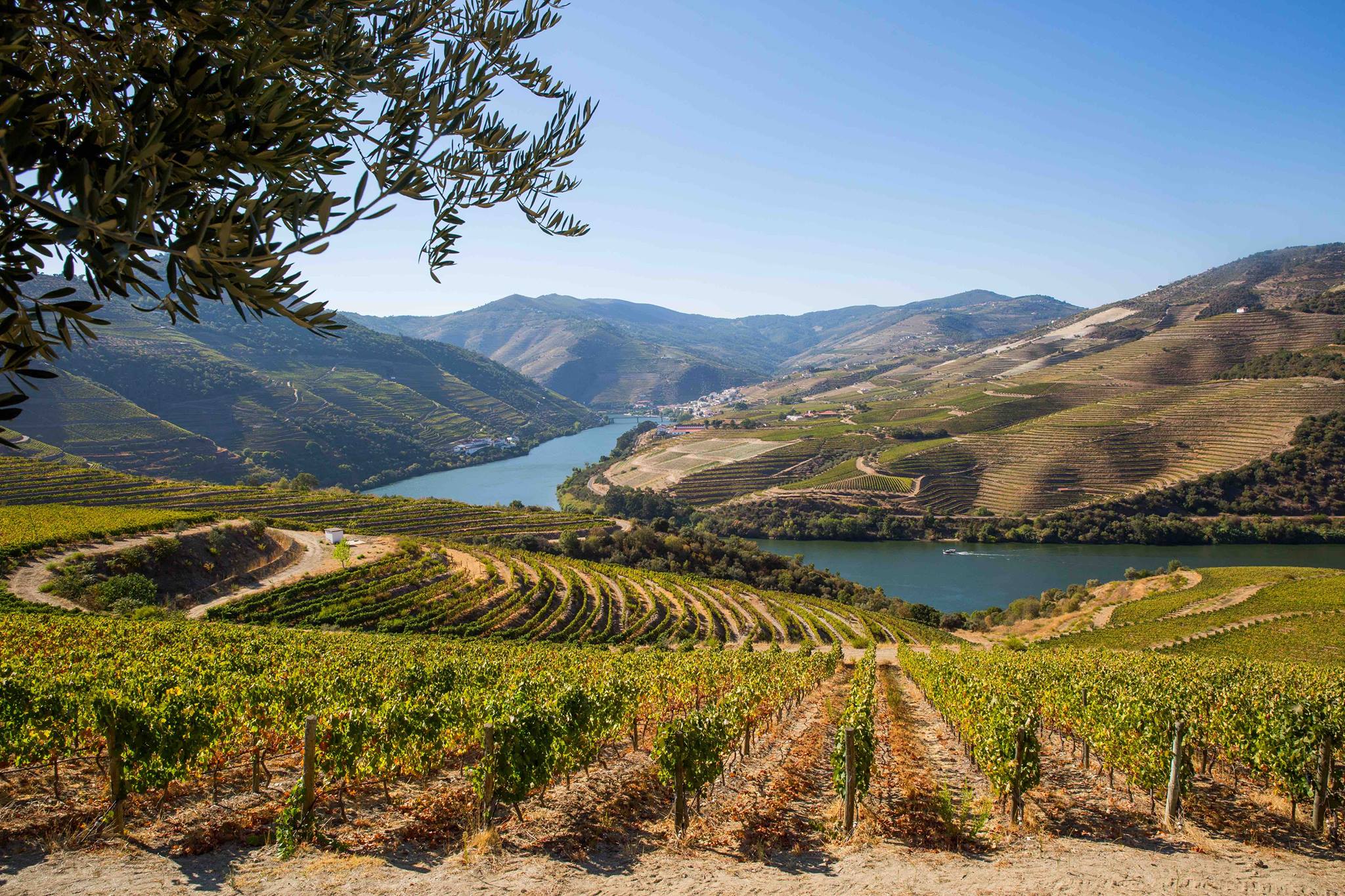Wine in Portugal can be traced back to 2000 BC; wines that were grown and made in the Tejo and Sado valleys served as local currency. Throughout the years Portugal suffered many colonisers, each one of them be it Phoenician, Greek, Iberian, and eventually the Romans brought with them their traditions and knowledge of everything vinous. It was the Romans who set up the first ‘modern’ ideal of wineries in the country with a serious hub operating out of Portugal to feed the demand for wine that was skyrocketing in the eastern reaches of the Empire.
In 1143, Portugal was founded and by 1249 monasteries and military hubs became bustling market towns where people sought to quench their thirsts. The importance of wine in a religious aspect worked exceptionally well to integrate the consumption of wine into everyday lives of the Portuguese people. During the 15th century, wine was transported in the nation’s finest sailing ships, essentially as a weight to balance the ships as they rolled across the high seas. The fortified wines would age inside the barrels; time, heat and the rocking of the sea would perform a small miracle when the ships would return to Portuguese ports with wines of unmatched quality, considered precious and sold at a price of gold.
As the age of world exploration continued, the Portuguese became a centre for wine trading and consumption boasting colonies in all four corners of the world (which they had recently discovered was not actually flat!). By the eighteenth century, the Companhia Geral da Agricultura das Vinhas do Alto Douro was created with the aim of disciplining the production and trade of the region's wines and establishing the demarcation of the region. The 1800s were a very bad time to be a Portuguese winemaker, first a powdery mildew swept through the country’s vineyards making yields far lower than the previous years and upsetting the wine trade industry. Following the mildew came Phylloxera, an insect native to Northern Africa that all but halted the European wine industry in the late nineteenth century, though the country’s rebound was quick and by 1874 their wines were back to winning international acclaim at the London
Exhibition.
At the beginning of the 20th century, the process of officially regulating other Portuguese appellations began. Madeira, Moscatel de Setúbal, Carcavelos, Dão, Colares and Vinho Verde joined Port Wine and the table wines of the Douro. After the Second World War, vineyards were commonly owned and operated by cooperatives which were managed to varying degrees of success. In 1996, ViniPortugal, an intersectional organisation of Portuguese wine, was founded and recognised by order of the Ministry of Agriculture. Throughout the nineties and into the early 00’s, the wine industry pushed further for region specific indication on their wines similar to how wines in Italy are recognised with DOC/DOCG labels. By 2010, 31 Appellations of Origin and 12 Geographical Indications were recognised and protected in Portugal.
In 1143, Portugal was founded and by 1249 monasteries and military hubs became bustling market towns where people sought to quench their thirsts. The importance of wine in a religious aspect worked exceptionally well to integrate the consumption of wine into everyday lives of the Portuguese people. During the 15th century, wine was transported in the nation’s finest sailing ships, essentially as a weight to balance the ships as they rolled across the high seas. The fortified wines would age inside the barrels; time, heat and the rocking of the sea would perform a small miracle when the ships would return to Portuguese ports with wines of unmatched quality, considered precious and sold at a price of gold.
As the age of world exploration continued, the Portuguese became a centre for wine trading and consumption boasting colonies in all four corners of the world (which they had recently discovered was not actually flat!). By the eighteenth century, the Companhia Geral da Agricultura das Vinhas do Alto Douro was created with the aim of disciplining the production and trade of the region's wines and establishing the demarcation of the region. The 1800s were a very bad time to be a Portuguese winemaker, first a powdery mildew swept through the country’s vineyards making yields far lower than the previous years and upsetting the wine trade industry. Following the mildew came Phylloxera, an insect native to Northern Africa that all but halted the European wine industry in the late nineteenth century, though the country’s rebound was quick and by 1874 their wines were back to winning international acclaim at the London
Exhibition.
At the beginning of the 20th century, the process of officially regulating other Portuguese appellations began. Madeira, Moscatel de Setúbal, Carcavelos, Dão, Colares and Vinho Verde joined Port Wine and the table wines of the Douro. After the Second World War, vineyards were commonly owned and operated by cooperatives which were managed to varying degrees of success. In 1996, ViniPortugal, an intersectional organisation of Portuguese wine, was founded and recognised by order of the Ministry of Agriculture. Throughout the nineties and into the early 00’s, the wine industry pushed further for region specific indication on their wines similar to how wines in Italy are recognised with DOC/DOCG labels. By 2010, 31 Appellations of Origin and 12 Geographical Indications were recognised and protected in Portugal.
Wine #1: Bico Amarelo Vinho Verde
Vinho Verde is the largest denomination in Portugal with roughly twenty-four thousand hectares of vineyards in Northwest Portugal. Vineyards punctuate the riverbanks on either side of both of the rivers that flow through the region planted firmly in exceptionally fertile soil. Because of the area’s proximity to the Atlantic Ocean the region is well regulated in temperature with the maritime breezes wafting inland to aid in regulating temperatures. Vinho Verde is known for its unusual vine management system which sees vines trained to intertwine with the trees interplanted within the vineyards.
The dominant white grape varieties are Alvarinho, Arinto (locally known as Pedernã), Avesso, Azal, Loureiro and Trajadura, while the red varieties are Borraçal, Brancelho, Espadeiro and Vinhão.You may have heard folks call Vinho Verde “green wine” and while that is a literal direct translation, there are a few opinions on why the region bears this name. The first being that the name Vinho Verde comes from the acidity and freshness of Vinho Verde, or that it might remind someone of unripe fruit. Then there are those who say that the origin of "Verde" can be attributed to the fact that the wine is produced in a region very rich in vegetation and is therefore exceptionally green, even during the winter.
This wine is made of Loureiro, Alvarinho and Avesso and it is as simple as it is delicious. Vinified in stainless steel, this wine is fresh and zippy. It comes in at an excellent price point and is for the shopper who is looking for something crushable and not too serious.
Wine #2: Quinta Do Vale Meão 'Meandro' Douro
With this next wine, we will be looking at the Douro! Heralded by UNESCO as, “...an outstanding example of humankind's unique relationship with the natural environment” the Douro Valley is one of the gnarliest wine regions in Europe. It is nestled in the mountains along the banks of the Douro river. Because of those mountains, the Douro is not afforded the same maritime influences as Vinho Verde. The climate is dry, though not quite arid, with cold winters and sweltering summers. Its existence as a major wine hub is a testament to the power of human will, with terraced vineyards along steep mountainsides that seem to defy gravity.
The Douro is best known as being the birthplace of Port, and thanks to Port there is some recognition to the name Douro, it’s kind of like when your sister had a teacher a few years before you so now even though you know that you might not be the best at Chemistry so you have something to prove, but at least somebody’s already put in a good word for you. It is one of the richest regions in terms of indigenous grape varieties, with hundreds of unique varieties and an extensive area dedicated to old vines. Among the hundreds of varieties, five red varieties stand out, Tinta Barroca, Tinta Roriz, Tinto Cão, Touriga Franca and Touriga Nacional; all of which are used in Port. The white varieties of note are Gouveio, Malvasia Fina, Moscatel, Rabigato and Viosinho. Quinta Do Vale Meão is a winery with an exceptionally rich history.
In 1877 a woman by the name of Antónia Adelaide Ferreira, who was already the owner of the largest winemaking estate in the region, purchased an additional 300 hectares of virgin land perfect for growing grapes. Throughout a span of eight years she dictated the needs of what would become a flourishing set of vineyards, but she did not get to live to see her haven flourish as she passed away a year after the vineyards were finished being planted and constructed. The winery has remained in her family and nearly one hundred years after the death of Antonia Adelaide in 1994, the entirety of Quinta Do Vale Meao was owned by the family after they bought out various partners. Passion for wine runs deep within this family with multiple members attending oenology school and several branching off to produce wines under their own labels in addition to the family’s.
This wine is made up of mainly Touriga Nacional, Touriga Franca, and Tinta Roriz which account for 85% of the blend of this wine.This blend also includes Tinta Amarela, Tinta Barroca, and Tinto Cão. The grapes are vinified separately both in stainless steel vats as well as granite lagares, which are open granite tubs (see one here: https://images.app.goo.gl/bzPVqnUcrC8wdvhi8). The wine will then be aged for 14 months in two and three-year-old barriques.
This wine is for the shopper who wants something luxurious and full bodied. Somebody who frequents the “Bold & Structured” section who is craving something a snooch (scientific term) outside of their comfort zone.


